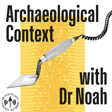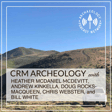
Fighting in the Arena - Analyzing Skeletons of Roman gladiators P1 – With Dr Fabian Kanz (S01E05)
Maybe you know the movie “The Game changers” by UFC-fighter James Wilks. The premise of this documentary was him finding out, that roman gladiators ate very little to no meat. Before this, James Wilks was sure that animal protein was essential for the upkeep of energy levels, the growth of muscles and the healing from injuries. But after reading recent research papers on the subject, he was convinced that the gladiators had a predominantly plant-based diet during training and fights in the arena. Which in term led him to promote a vegan diet for modern day top athletes in his movie.
But is this actually true, were the gladiator’s “vegan”? In this episode we will lock at primary sources, results from analyzed bone samples and talk with Dr. Fabian Kanz, the researcher, who wrote the article James Wilks based “The Game changers” on and who is actually featured in the movie alongside people like Arnold Schwarzenegger.
Reverences:
- Lösch et al. (2014), Stable Isotope and Trace Element Studies on Gladiators and Contemporary Romans from Ephesus (Turkey, 2nd and 3rd Ct. AD) – Implications for Differences in Diet
- Meller, Sampaolo (2013), Gladiator. Looking on death every day
- Kanz, Grossschmidt (2009), Dying in the Arena: The Osseous Evidence from Ephesian Gladiators
- Nossov (2009), Gladiator. Rome’s bloody spectacle
- Ville (1981), La gladiature en Occident des origines à la mort de Domitien
Website: https://23minarch.com
Support: patreon.com/23minarch





